
The Wright brothers, Orville Wright and Wilbur Wright, were American aviation pioneers generally credited with inventing, building, and flying the world's first successful airplane. They made the first controlled, sustained flight of an engine-powered, heavier-than-air aircraft with the Wright Flyer on December 17, 1903, four miles (6 km) south of Kitty Hawk, North Carolina, at what is now known as Kill Devil Hills. In 1904 the Wright brothers developed the Wright Flyer II, which made longer-duration flights including the first circle, followed in 1905 by the first truly practical fixed-wing aircraft, the Wright Flyer III.

LeClaire is a city in Scott County, Iowa, United States. The population was 4,710 in 2020, a 65.4% increase from 2,847 in 2000, making it one of the fastest-growing communities in the Quad Cities. LeClaire is considered a suburb and part of the Quad Cities Metropolitan Area, which includes the area of Davenport and Bettendorf, Iowa, and Rock Island, Moline, and East Moline, Illinois.
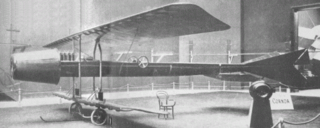
The Coandă-1910, designed by Romanian inventor Henri Coandă, was an unconventional sesquiplane aircraft powered by a ducted fan. Called the "turbo-propulseur" by Coandă, its experimental engine consisted of a conventional piston engine driving a multi-bladed centrifugal blower which exhausted into a duct. The unusual aircraft attracted attention at the Second International Aeronautical Exhibition in Paris in October 1910, being the only exhibit without a propeller, but the aircraft was not displayed afterwards, and it fell from public awareness. Coandă used a similar turbo-propulseur to drive a snow sledge, but he did not develop it further for aircraft.

An airmail stamp is a postage stamp intended to pay either an airmail fee that is charged in addition to the surface rate, or the full airmail rate, for an item of mail to be transported by air.
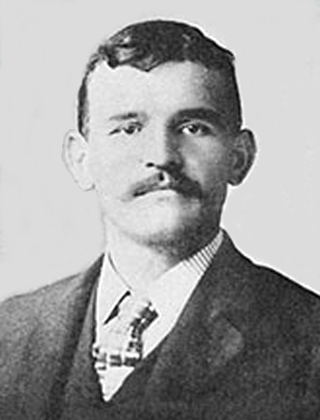
Gustave Albin Whitehead was an aviation pioneer who emigrated from Germany to the United States where he designed and built gliders, flying machines, and engines between 1897 and 1915. Controversy surrounds published accounts and Whitehead's own claims that he flew a powered machine successfully several times in 1901 and 1902, predating the first flights by the Wright Brothers in 1903.

John Joseph Montgomery was an American inventor, physicist, engineer, and professor at Santa Clara University in Santa Clara, California, who is best known for his invention of controlled heavier-than-air flying machines.

A flight recorder is an electronic recording device placed in an aircraft for the purpose of facilitating the investigation of aviation accidents and incidents. The device may often be referred to colloquially as a "black box", an outdated name which has become a misnomer—they are now required to be painted bright orange, to aid in their recovery after accidents.
Moog is an American-based designer and manufacturer of electric, electro-hydraulic and hydraulic motion, controls and systems for applications in aerospace, defense, industrial and medical devices. The company operates under four segments: aircraft controls, space and defense controls, industrial controls, and components. Moog is headquartered in Elma, New York and has sales, engineering, and manufacturing facilities in twenty-six countries.
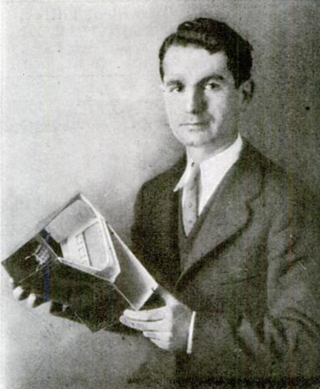
Luther George Simjian was an Armenian-American inventor and entrepreneur. A prolific and professional inventor, he held over 200 patents, mostly related to optics and electronics. His most significant inventions were a pioneering flight simulator, arguably the first ATM and improvement to the teleprompter.

College Park Airport is a public airport located in the City of College Park, in Prince George's County, Maryland, United States. It is the world's oldest continuously operated airport. The airport is located south of Paint Branch and Lake Artemesia, east of U.S. Route 1 and the College Park Metro/MARC station and west of Kenilworth Avenue.

David Ronald de Mey Warren was an Australian scientist, best known for inventing and developing the flight data recorder and cockpit voice recorder.

Eastern Air Lines Flight 980 was a scheduled international flight from Asunción, Paraguay, to Miami, Florida, United States. On January 1, 1985, while descending towards La Paz, Bolivia, for a scheduled stopover, the Boeing 727 jetliner struck Mount Illimani at an altitude of 19,600 feet (6,000 m), killing all 29 people on board.
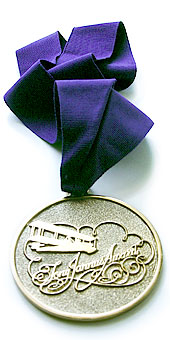
The Tony Jannus Award recognizes outstanding individual achievement in scheduled commercial aviation by airline executives, inventors and manufacturers, and government leaders. The award is conferred annually by the Tony Jannus Distinguished Aviation Society and was first bestowed in 1964 in Tampa, Florida, U.S. Its namesake, aviation pioneer Tony Jannus, piloted the inaugural flight of the St. Petersburg–Tampa Airboat Line on January 1, 1914, the first scheduled commercial airline flight in the world using heavier-than-air aircraft. In addition to preserving the legacy of Tony Jannus, the non-profit Society also offers financial assistance to college students pursuing studies in aviation and conducts an annual essay contest for high school students to encourage careers in aviation.

Colgan Air Flight 3407 was a scheduled passenger flight from Newark, New Jersey, US to Buffalo, New York, US on February 12, 2009. Colgan Air staffed and maintained the aircraft used on the flight that was scheduled, marketed and sold by Continental Airlines under its Continental Connection brand. The aircraft, a Bombardier Q400, entered an aerodynamic stall from which it did not recover and crashed into a house at 6038 Long Street in Clarence Center, New York at 10:17 pm EST, killing all 49 passengers and crew on board, as well as one person inside the house.
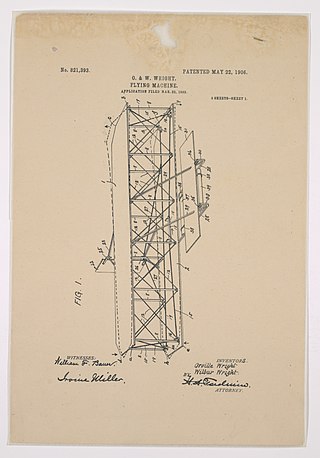
The Wright brothers patent war centers on the patent that the Wright brothers received for their method of airplane flight control. They were two Americans who are widely credited with inventing and building the world's first flyable airplane and making the first controlled, powered, and sustained heavier-than-air human flight on December 17, 1903.
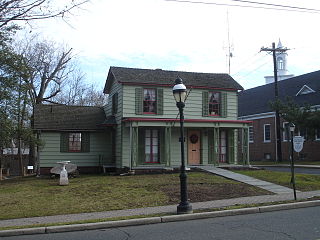
The Crane-Phillips House, located at 124 N. Union Avenue in Cranford in Union County, New Jersey, United States, is a Victorian cottage in the architectural style of Andrew Jackson Downing, the first American architect. The Crane-Phillips House is now a museum operated by the Cranford Historical Society that offers visitors a glimpse of what life was like for a modest family in the Victorian era of opulence. It illustrates the late 19th century as the era of invention and highlights inventions that changed everyday life for the average person by way of the house's second owners, the Phillips family. Henry J. Phillips, an American Civil War veteran of the 7th New York Militia, was one of the first inventors of the modern kitchen hood. During the war, he had also patented a convertible tent and overcoat for military use. His brother, Charles Henry Phillips, was the inventor of Phillips' Milk of Magnesia.

Valerie L. Thomas is an American data scientist and inventor. She invented the illusion transmitter, for which she received a patent in 1980. She was responsible for developing the digital media formats that image processing systems used in the early years of NASA's Landsat program.

Frank Henry Russell was an American aviation pioneer and the first General Manager of the Wright Brothers Company at Dayton, Ohio. He went on to co-found the Burgess Company and the Manufacturers Aircraft Association. He was the Vice President and a director of Curtiss Aeroplane & Motor Company and a director of Curtiss-Wright Corporation.
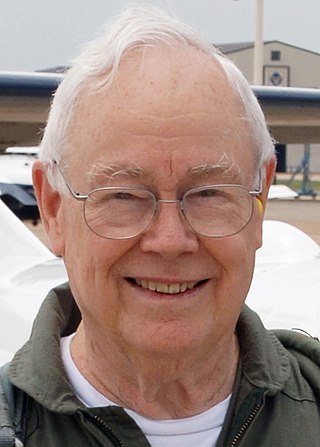
Keith Ferris is an aviation artist whose work is displayed at the Smithsonian Institution's National Air and Space Museum and the National Museum of the US Air Force and has been cited as the “Dean of American Aviation Art”. His work in aircraft camouflage has transformed the approach to painting US military aircraft.
William Noel Alsbrook, Sr. was an American inventor and combat fighter pilot with the 332nd Fighter Group's 99th Fighter Squadron, best known as the Tuskegee Airmen, "Red Tails," or "Schwartze Vogelmenschen" among enemy German pilots.


















